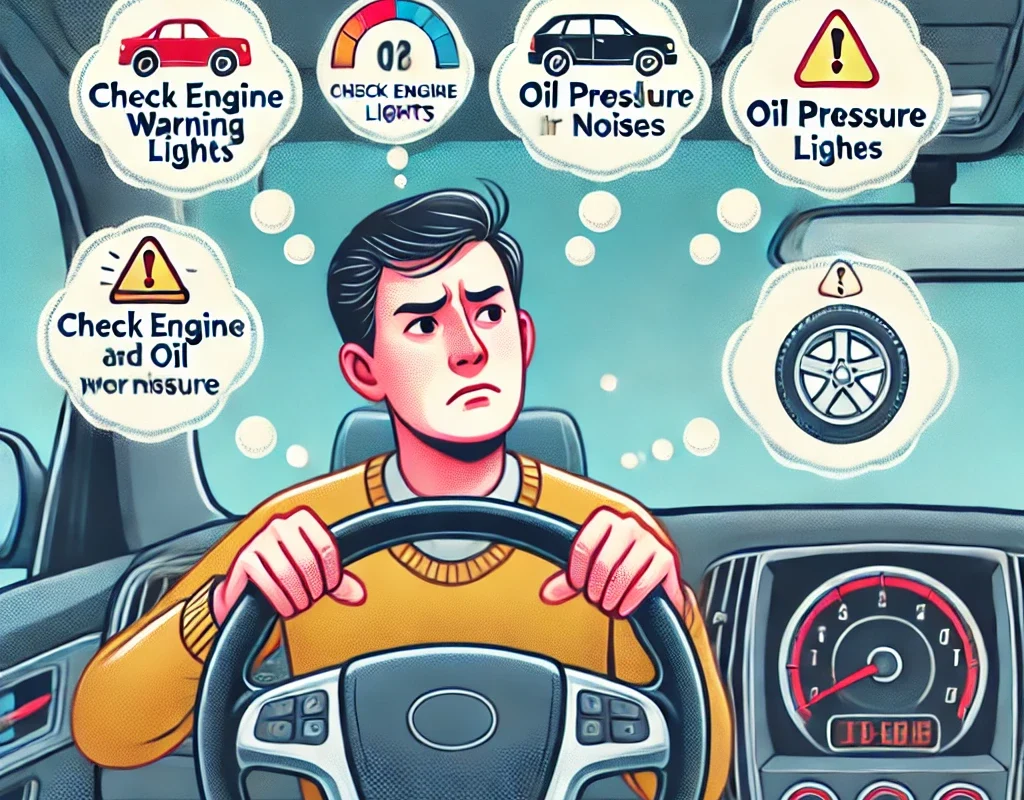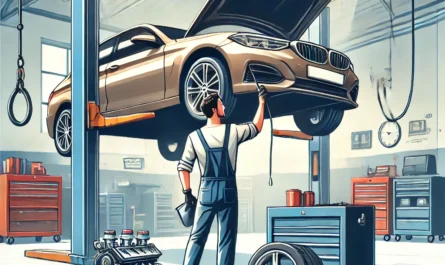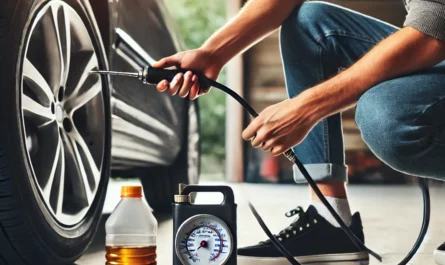Owning a car comes with the responsibility of ensuring that it stays in good condition. However, not all drivers are familiar with the early warning signs of car trouble. Ignoring minor issues can lead to expensive repairs down the road, not to mention the potential for breakdowns in inconvenient or even dangerous situations. Learning how to spot problems early can save you both time and money while helping you avoid more serious vehicle damage.
In this guide, we’ll explore the most common signs of car problems and provide tips on how to identify them before they escalate.
Dashboard Warning Lights and What They Mean
Modern cars are equipped with advanced warning systems that alert you when something isn’t quite right. When a dashboard warning light comes on, it’s your vehicle’s way of telling you it needs attention. The key is to understand what these lights mean and how urgently you should act on them.
- Check Engine Light: This is one of the most dreaded warning lights, but it doesn’t always mean a major issue. It could indicate something as simple as a loose gas cap or as complex as an engine misfire. A diagnostic scan tool can read the error code and help you identify the cause.
- Oil Pressure Light: If this light comes on, it means your engine isn’t getting enough oil, which could lead to serious engine damage. Pull over immediately and check your oil levels.
- Battery Light: This light usually indicates an issue with the electrical system, such as a failing alternator or loose battery cables. If this light appears while driving, it’s a good idea to have your battery and charging system checked as soon as possible.
- Brake Warning Light: This could mean low brake fluid, worn brake pads, or an issue with your brake system’s hydraulics. Braking problems are critical, so don’t delay an inspection if this light comes on.
Unusual Noises from Your Car
Cars make all sorts of noises, but knowing which sounds to ignore and which ones to take seriously can make a big difference. Some of the most common car noises that indicate problems include:
- Squealing or Grinding When Braking: This often means your brake pads are worn down and need replacing. If ignored, it can damage your rotors, leading to more expensive repairs.
- Knocking Under the Hood: A knocking sound, particularly from the engine, can be a sign of a serious issue like worn-out bearings or connecting rods. This requires immediate attention from a mechanic.
- Clicking When Turning: A clicking sound when turning the wheel could indicate an issue with your CV joints, which are essential for steering and handling.
- Humming or Whining: These sounds could be related to a transmission issue or a problem with your vehicle’s differential.
If you notice any unusual noises, it’s a good idea to get them checked before they lead to more extensive damage.
Vibrations and Shaking While Driving
Vibrations or shaking while driving can indicate several different issues, depending on the symptoms:
- Steering Wheel Vibration: If your steering wheel vibrates while driving, particularly at higher speeds, this could mean your wheels are out of balance or that there’s an alignment issue.
- Car Shakes During Braking: If your car vibrates when you brake, it could be due to warped brake rotors or worn brake pads. This affects your ability to stop safely and should be addressed quickly.
- Vibration from the Engine: Shaking from the engine could indicate a misfire, worn motor mounts, or an issue with the spark plugs or fuel system.
While some vibrations are minor, others may signal a serious problem. Pay attention to when and where the vibration occurs to help your mechanic diagnose the issue.
Strange Smells in Your Car
Your sense of smell can also alert you to potential car problems. Different smells indicate different issues, and catching them early can prevent more significant repairs.
- Burning Smell: A burning smell could mean overheated brakes or a problem with the clutch. It may also indicate burning oil or rubber under the hood, which could be caused by oil leaks or worn-out belts.
- Sweet Smell: If you notice a sweet, syrupy smell, it could be a coolant leak. This is a serious issue, as coolant is necessary to keep your engine from overheating.
- Fuel Smell: If you smell gas inside your car, it could indicate a fuel leak, which is dangerous. Stop driving and have your vehicle inspected immediately.
- Rotten Egg Smell: This unpleasant odor may mean there’s an issue with your catalytic converter or fuel system. It’s essential to address this problem before it leads to engine damage.
Issues with Car Starting or Stalling
If your car struggles to start or stalls frequently, it’s a sign that something isn’t right. Common causes include:
- Battery Issues: A weak or dead battery is the most common reason a car won’t start. If the engine cranks slowly or not at all, have the battery tested.
- Starter Problems: If you hear a clicking noise but the engine won’t turn over, the starter motor may be failing.
- Fuel System Issues: If your car starts but stalls shortly after, the fuel filter might be clogged, or the fuel pump could be malfunctioning.
By addressing these issues early, you can avoid being stranded with a car that won’t start at all.
Poor Fuel Efficiency
If you notice your car’s fuel efficiency decreasing, it could be a sign of several underlying problems, such as:
- Dirty Air Filters: Clogged air filters can cause the engine to work harder, reducing fuel efficiency.
- Worn Spark Plugs: Old or faulty spark plugs can cause incomplete combustion, wasting fuel.
- Fuel Injector Issues: Dirty or malfunctioning fuel injectors can reduce fuel economy.
If your gas mileage takes a sudden dip, it’s worth getting your car checked out to address the underlying issue.
Fluid Leaks: What to Watch For
Leaking fluids are a clear sign that something is wrong with your car. The color and location of the leak can help you identify what’s leaking:
- Oil: Brown or black puddles under your car typically indicate an oil leak. This can result from a damaged oil pan, worn seals, or a bad gasket.
- Coolant: A green, pink, or orange fluid usually means a coolant leak. This can lead to overheating if not addressed.
- Transmission Fluid: Red or brownish fluid is often a sign of a transmission leak. Transmission issues are expensive to fix, so addressing this early is crucial.
- Brake Fluid: A yellowish fluid near your tires could indicate a brake fluid leak, which is dangerous and needs immediate attention.
You can also read: Top 10 Car Maintenance Tips to Keep Your Vehicle Running Smoothly
Regularly checking under your car for leaks can help you catch and fix issues before they cause significant damage.
By learning how to identify these common car problems, you can act quickly before they worsen. Staying vigilant with your vehicle’s performance and addressing issues early not only saves money on repairs but also ensures a safer, smoother driving experience. In the next sections, we’ll explore more specific troubleshooting methods, provide



